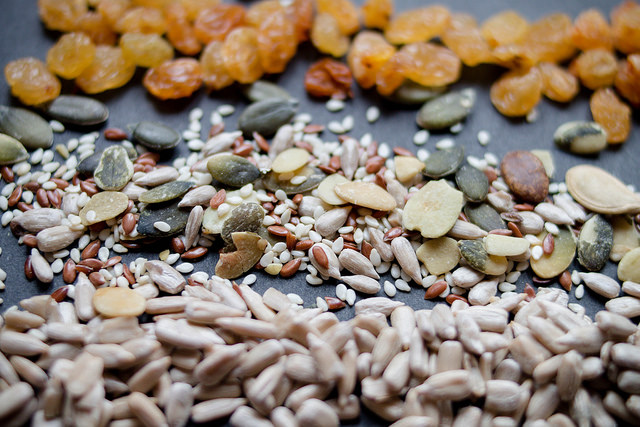Editor’s Note: This website is not designed to, and should not be construed to, provide medical advice, professional diagnosis, opinion or treatment to you or any other individual, and is not intended as a substitute for medical or professional care and treatment. For serious.
~
Why Bushmen are Healthier than the Average Westerner.
Dr. Dennis Burkitt, a famous English physician, studied the differences between indigenous African bushmen and their “civilized” western counterparts. The bushmen appeared free of modern life’s scourges, including heart disease, cancer, diabetes, and obesity.
Dr. Burkitt discovered the average bushman had a stool weight of two pounds, whereas “civilized” men had a stool weight of only four ounces. What constituted that monumental difference? The amount of fiber they ate.
Today, the average American eats about eight grams of fiber a day, yet researchers determined hunter-gatherer ancestors got about 100 grams of fiber from roots, berries, leaves, and plant foods. That fiber helped our ancestors stay healthy, and getting sufficient amounts can help you maintain peak health today.
Benefits of Fiber
Dietary fiber boasts an impressive resume. Sufficient amounts can actually prevent obesity and chronic disease because fiber slows the rate food enters your bloodstream and increases the speed food exits through the digestive tract, which helps balance your blood sugar. Fiber also helps quickly eliminate toxins from your gut and reduces your appetite.
One study showed how gut bacteria can utilize certain dietary fibers to turn on an anticancer gene and turns off colon cancer. In fact, fiber has been shown to reduce the risk of colon cancer up to one-third and breast cancer by almost 40 percent.
Fiber also lowers cholesterol and reduces the risk of heart disease by as much as 40 percent. If you have diabetes, adding fiber to your diet may even help you use less insulin.
Fiber comes in two “flavors”: soluble and insoluble. Most of the benefits I described come from soluble fiber, which can also balance hormone levels, remove excess estrogen, make vitamins and minerals, provide food for the colon cells, and much more.
You’ll find soluble fiber in fruits, vegetables, beans, nuts, seeds, and most whole grains. Gut bacteria metabolize this soluble fiber, and that’s when the benefits start.
That doesn’t mean insoluble fiber, found in foods like bran, isn’t important. It works as a scouring pad for your intestines, helping you stay regular and reducing constipation and other elimination problems.
The Benefits of Super Fiber
Glucomannan (GM) is a soluble, fermentable, and highly viscous dietary fiber from the root of the elephant yam. The konjac tuber has been used for centuries as an herbal remedy and to make traditional foods such as konjac jelly, tofu, and noodles. More recently, purified konjac flour, or GM, has been used as a food stabilizer, gelling agent, and supplement.
What makes this fiber “super”? It can absorb up to 50 times its weight in water, making it one of the most viscous dietary fibers known. That means GM can help you shed pounds. In many studies, doses of two to four grams of GM per day resulted in significant weight loss in overweight and obese individuals.
GM works by promoting a sense of fullness, pushing more calories out through your colon rather than letting them be absorbed. GM also lowers your food’s energy density. In other words, it bulks up food in your gut, creating a lower calorie content per weight of food you eat.
Since fiber has almost no calories but a lot of weight, adding it to your diet lowers the energy-to-weight ratio of food. Studies show that the weight of food controls your appetite. Fiber increases the food’s weight without increasing calories, a critical factor in weight control.
Because of its viscosity, GM leaves your stomach and small bowel slowly. By slowing the rate of food absorption from the gut to the bloodstream, GM reduces the amount of insulin produced after a meal and increases gut hormones like cholecystokinin, further controlling your appetite. And finally, you lose more calories through stool because GM soaks up all those extra calories!
Beyond weight reduction, GM has been studied for its effects on constipation, serum cholesterol, blood glucose, blood pressure, and insulin resistance syndrome.
Nine Strategies to Increase Dietary Fiber
I hope you can understand how crucial dietary fiber is for optimal health and weight. Ideally, you want to get 30 to 50 grams every day. That becomes a breeze when you apply these nine strategies.
- Get the flax. Get a coffee grinder just for flax seeds, grind 1/2 cup at a time, and keep in a tightly sealed glass jar in the fridge or freezer. Eat two tablespoons of ground flax seeds a day. Sprinkle on salads, grains, or vegetable dishes or mix in a little unsweetened applesauce.
- Load up on legumes. Beans beat out everything else for fiber content!
- Bulk up on vegetables. With low levels of calories and high levels of antioxidants and protective phytochemicals, these excellent fiber sources should be heaped on your plate daily.
- Go with the grain. Whole grains like brown rice or quinoa (actually a seed) are rich in fiber.
- Eat more fruit. Include a few servings of low-sugar fruits to your diet daily. Berries are highest in fiber and other protective phytochemicals.
- Go nuts. Include a few handfuls of almonds, walnuts, pecans, or hazelnuts to your diet every day.
- Start slowly. Switching abruptly to a high-fiber diet can cause gas and bloating. Increase your fiber intake slowly until you get up to 50 grams a day.
- Consider a good fiber supplement. If you have trouble meeting your fiber quota, choose a supplement that contains both soluble and insoluble fiber with no sweeteners or additives.
- Choose GM. My favorite fiber is glucomannan (GM) or konjac. Many companies sell it in capsule form. You’ll take two to four capsules with a glass of water, 30 to 60 minutes before eating. Don’t take any medications within one hour before or two hours after taking it, since fiber may absorb the medication.
~
What steps do you take to get more fiber in your diet, and what’s your favorite high-fiber food? Share your strategies and favorites in the comments below or on my Facebook fan page.
~
References
Howarth NC, Saltzman E, Roberts SB. Dietary fiber and weight regulation. Nutr Rev. 2001;59:129-139.
Burton-Freeman B. Dietary fiber and energy regulation. J Nutr. 2000; 130(2S Suppl):272S-275S
Vuksan V, Sievenpiper SL, Xu Z, et al. Konjac-Mannan and American Ginseng: Emerging alternative therapies for type 2 diabetes mellitus. J Am Coll Nutr. 2001;20(5Suppl):370S-380S.
Bourden I, Yokoyama W, Davis P, et al. Postprandial lipid, glucose, insulin, and cholecystokinin responses in men fed barley pasta enriched with beta-glucan. Am J Clin Nutr. 1999;69:55-63.
Baer DJ, Rumpler WV, Miles CW, Fahey GCJ. Dietary fiber decreases the metabolizable energy content and nutrient digestibility of mixed diets fed to humans. J Nutr. 1997;127: 579-586.
Chen H-L, Sheu WH, Tai T-S, Liaw Y-P, Chen Y-C. Konjac supplement alleviated hypercholesterolemia and hyperglycemia in type 2 diabetic subjects–a randomized double-blind trial. J Am Coll Nutr. 2003;22(1):36-42.
Vuksan V, Jenkins DJ, Spadafora P, et al. Konjac-mannan (glucomannan) improves glycemia and other associated risk factors for coronary heart disease in type 2 diabetes. A randomized controlled metabolic trial. Diabetes Care. 1999;22(6):913-919.
Walsh DE, Yaghoubian V, Behforooz A. Effect of glucomannan on obese patients: A clinical study. Int J Obes. 1984;8:289-293.
Reffo GC, Ghirardi PE, Forattini C. Glucomannan in hypertensive outpatients: Pilot clinical trial. Curr Ther Res. 1988; 44(1):22-27.
Livieri C, Novazi F, Lorini R. The use of highly purified glucomannan-based fibers in childhood obesity. Pediatr Med Chir. 1992;14(2):195-198.
Vita PM, Restelli A, Caspani P, Klinger R. Chronic use of glucomannan in the dietary treatment of severe obesity. Minerva Med. 1992;83(3):135-139.
Cairella M, Marchini G. Evaluation of the action of glucomannan on metabolic parameters and on the sensation of satiation in overweight and obese patients. ClinTer. 1995;146(4):269-274.
Arvill A, Bodin L. (1995). Effect of short-term ingestion of konjac glucomannan on serum cholesterol in healthy men. Am J Clin Nutr. 1995;61:585-589.
Vuksan V, Sievenpiper JL, Owen R, et al. Beneficial effects of viscous dietary fiber from konjac-mannan in subjects with the insulin resistance syndrome: Results of a controlled metabolic trial. Diabetes Care. 2000;23(1):9-14.
Gallaher DD, Gallaher CM, Mahrt GJ, et al. A glucomannan and chitosan fiber supplement decreases plasma cholesterol and increases cholesterol excretion in overweight normocholesterolemic humans. J Am Coll Nutr. 2002;21(5): 428-433.
Burley VJ, Paul AW, Blundell JE. Influence of a high-fibre food (myco-protein) on appetite: Effects on satiation (within meals) and satiety (following meals). Eur J Clin Nutr. 1993;47:409-418.
Hill AJ, Blundell JE. Macronutrients and satiety: The effects of a high protein or high carbohydrate meal on subjective motivation to eat and food preferences. Nutr Behav. 1986;3:133-144.
Astrup A, Vrist E, Quaade F. (1990). Dietary fibre added to a very low calorie diet reduces hunger and alleviates constipation. Int J Obes. 1990;14:105-112.
Pasman WJ, Saris WH, Wauters MA, Westerterp-Plantenga MS. Effect of one week of fibre supplementation on hunger and satiety ratings and energy intake. Appetite, 1997;29:77-87.
Liu S, Willett WC, Manson JE, Hu FP, Rosner B, Colditz G. Relation between changes in intakes of dietary fiber and grain products and changes in weight and development of obesity among middle-aged women. Am J Clin Nutr. 2003;78(5):920-927.
~
Love elephant and want to go steady?
Sign up for our (curated) daily and weekly newsletters!
Editor: Rachel Nussbaum
 Share on bsky
Share on bsky




Read 4 comments and reply